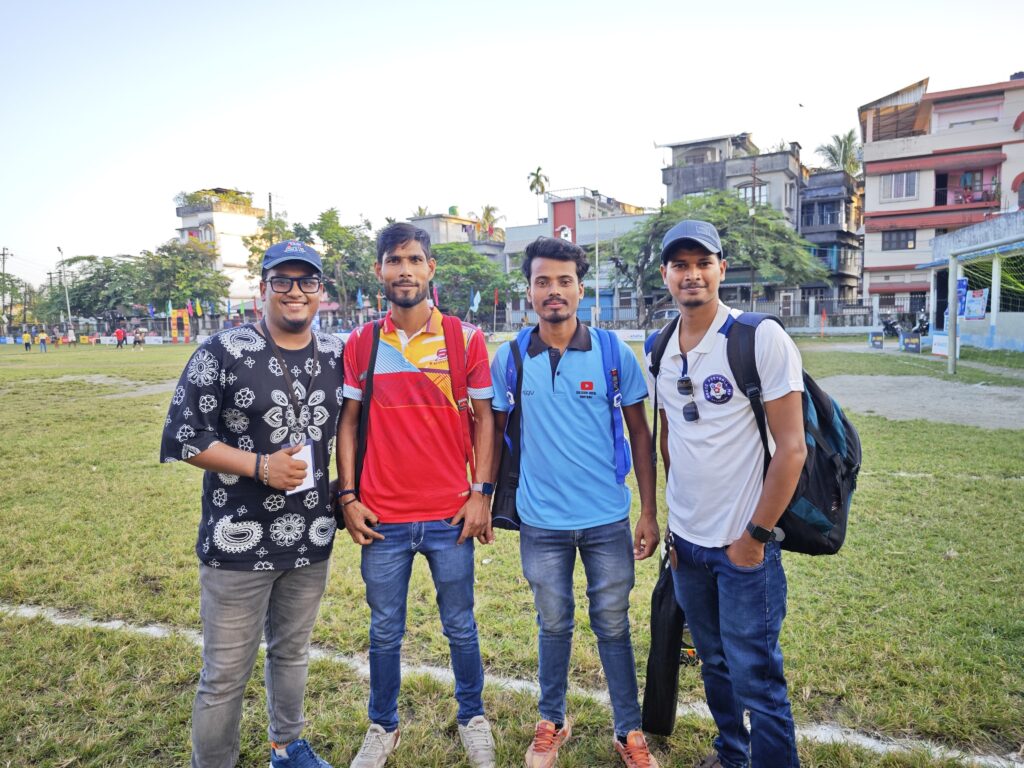
The third season of the RevSportz Football Carnival is currently underway in Siliguri, North Bengal, and this year, the tournament brings with it some unique features. Despite the number of teams being reduced from 24 to 16 due to potential logistical challenges in the new location, there was an overwhelming interest from local academies and teams from the North Bengal region, eager to participate in both the men’s and women’s categories.
This enthusiasm reflects the deeply rooted football culture in North Bengal. Sangita Das, a former East Bengal player, now playing professionally for the Railways, is a testament to this local talent pool. Having competed in the Football Carnival last year, Sangita is representing a different team this time. Like her, many other players who were part of the tournament in season two have returned, this time representing teams from their native region—highlighting North Bengal’s previously understated contribution to the tournament.
The popularity of ‘Khep’ tournaments in Bengal and Kerala also hints at this football fervour. Kheps are usually one-day football tournaments featuring 5, 7, or 9-a-side matches, where local teams battle it out in a parallel football ecosystem that supports an unorganised economy.
What was surprising to see at this year’s Football Carnival was an entire unrecognised chain of sports media dedicated to covering these niche tournaments. Local YouTubers, whose channels focus exclusively on khep tournaments across North Bengal, the Northeast, and Sikkim, approached the event organisers to cover the Football Carnival on their platforms.
These regions are known for organising such one-day tournaments throughout the year, often featuring foreign players, primarily from Nigeria and Ghana. For many of these content creators, covering khep football has become a livelihood, as tournament committees hire them to document the matches and promote local football culture.
With skills influenced by Lionel Messi in his prime, Mariyam Khatun has been one of the standout performers in the RevSportz #FootballCarnival. After lifting the trophy in season 2, she started this one with another free-kick wonder goal@RohanDC98https://t.co/vn1N83Dgav
— RevSportz Global (@RevSportzGlobal) October 23, 2024
Interestingly, the football influencers lacked a clear understanding of mainstream sports coverage, including concepts like media accreditation for leagues such as the I-League or Indian Super League (ISL) and the issue of rights violations within these leagues. Despite this, their approach to covering local tournaments was highly organised, with scheduled rosters to ensure year-round coverage across various grounds in the hilly regions. Each influencer would be assigned different tournaments, creating a full calendar of events for their niche audience.
The exposure to this parallel media ecosystem has been eye-opening, offering insights into how grassroots football thrives outside mainstream channels. While the influencers typically focus on small, unregulated events, the RevSportz Football Carnival stood out for its more structured approach. The tournament’s equal prize money for men’s and women’s teams, classified jerseys with sponsor logos for players and officials, and its month-long duration, attracted significant attention from these creators. More days of action meant more content for them to cover—a boon for their platforms.
The Football Carnival not only serves as a launchpad for young talents like Mariyam, but it also provides opportunities for the parallel sports media practitioners who might struggle to break into the mainstream due to limited resources. For them, the event represents a bridge between their grassroots expertise and the larger football world.
By focusing on the intersection point between the tournament and the local media landscape, this article highlights how regional football culture is fostering a unique, homegrown media ecosystem.
🚨RevSportz Football Carnival Day 02
Haldibari Tea Garden FC and Tarai FC goes through to the semifinals of the women’s leg. Enjoy the highlights.@Wowmomo4u @RohanDC98 @BoriaMajumdar @sharmisthagoop2 #FootballCarnival pic.twitter.com/7VdbeSOQMA
— RevSportz Global (@RevSportzGlobal) October 23, 2024




